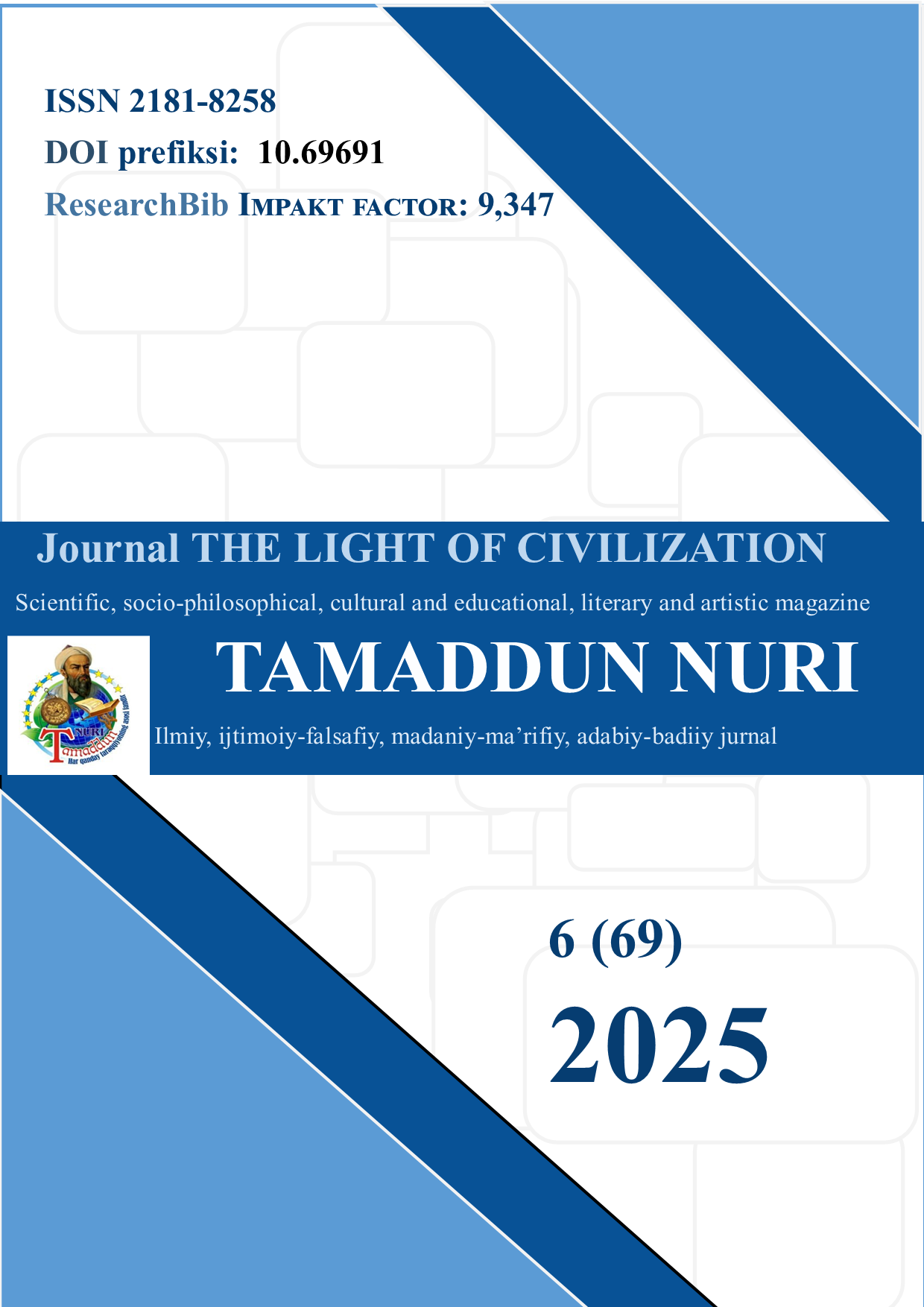THE ROLE OF ARABIC AND UIGHUR SCRIPTS IN THE WRITTEN CULTURE OF TURKIC PEOPLES AND THEIR IMPACT ON POLITICAL AND ECONOMIC PROCESSES
DOI:
https://doi.org/10.69691/fjvepm83Keywords:
Turkic peoples, Uighur script, Arabic script, political history, economic processes, written culture, source studies.Abstract
This article examines the formation and dissemination of Arabic and Uighur scripts in the written culture of Turkic peoples, analyzing their significance in political and economic processes from a historical perspective. The Uighur script, developed on the basis of the Sogdian script, served as a key medium for political and commercial documentation in Eastern Turkestan and adjacent regions. With the advent of Islam, the Arabic script became predominant in state administration, taxation, property records, and religious as well as scholarly works across Transoxiana and other Turkic territories.
References
Bartold, Vasiliy Vladimirovich. Turkiston islom davrida. Toshkent: Fan nashriyoti, 1963. pp. 32–89.
Golden, Peter B. An Introduction to the History of the Turkic Peoples. Wiesbaden: Otto Harrassowitz, 1992. pp. 101–138.
Nishonov, Ziyo. O‘zbekiston tarixi. Toshkent: O‘zbekiston, 1993. pp. 56–98.
Rashidov, Sirojiddin. Sharq yozuvlari tarixidan lavhalar. Toshkent: O‘zbekiston, 2001. pp. 45–72.
Tenishev, Edxard R. Yozuvlar tarixi va ularning turkiy tillar bilan bog‘liqligi. Moskva: Nauka, 1984. pp. 112–134.
Kliashtorny, Sergey G. Runic Inscriptions of Eurasian Steppes and the Origin of the Old Turkic Runic Writing. Budapest: Akadémiai Kiadó, 1995. pp. 87–110.
Vaissière, Étienne. Sogdian Traders: A History. Handbook of Oriental Studies, Section Eight: Central Asia, vol. 10, Brill, 2005. pp. 41–63.
Soucek, Svatopluk. A History of Inner Asia. Cambridge University Press, 2000. pp. 129–151.
Bregel, Yuri. An Historical Atlas of Central Asia. Leiden: Brill, 2003. pp. 73-88.
Inomov, Shamsiddin. O‘zbek yozuv islohoti tarixi. Toshkent: Akademnashr, 2017. pp. 18–43.
Downloads
Published
Issue
Section
License
Copyright (c) 2025 Journal of Tamaddun Nuri

This work is licensed under a Creative Commons Attribution-NoDerivatives 4.0 International License.



